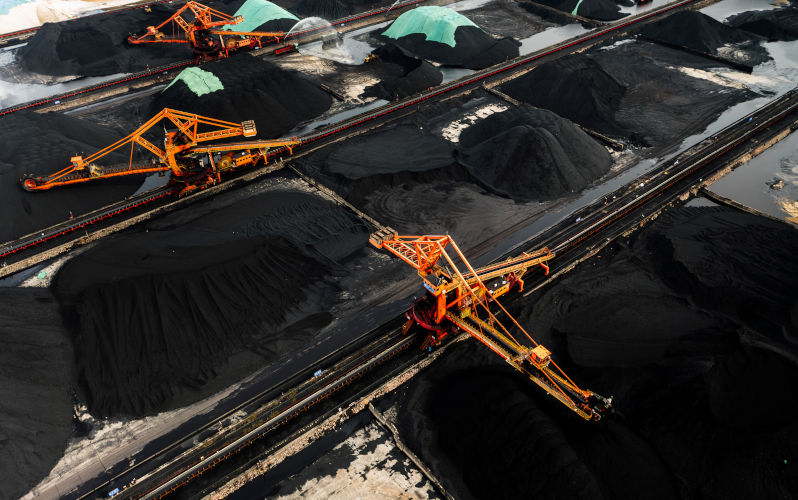China’s new climate targets show progress but lack ambition
November 14, 2025
On 24 September 2025, Chinese President Xi Jinping announced China’s updated targets for combatting climate change at the UN Climate Summit.
These will be formally included in China’s updated Nationally Determined Contributions, to be submitted before the November 2025 United Nations Climate Change Conference in Belem, Brazil. Under the Paris Agreement, all countries are expected to submit increasingly ambitious climate plans every five years.
China’s new headline target is to cut total greenhouse gas emissions by 7% to 10% by 2035, from a currently undefined peak expected to occur before 2030. Some analysts have argued that the target should have been closer to 30% to comply with the Paris Agreement’s goal of limiting warming to 2 degrees Celsius.
Researchers from Tsinghua University, which is strongly connected to Chinese policymaking, have devised an emissions trajectory to net-zero by 2060 in line with the updated targets. But they admit this would put more of the decarbonisation effort outside China, compared with pathways developed by international institutes.
As a political achievement, the updated emissions target deserves praise. China is the world’s largest emitter but remains a middle-income country with a per capita income about one-third of the EU average. It has faced several years of slower-than-expected economic growth – not an easy context for setting stringent environmental targets.
It is only 20 years ago that China vehemently opposed any restrictions on its own and other developing nations’ emissions, arguing they would limit economic growth and that historic responsibility lay with developed nations. In 2015, China announced its first emission intensity targets to the United Nations, committing to reduce emissions per unit of economic output by 60% to 65% by 2030 compared to 2005 levels.
This shift in target setting reflects China’s rapidly improving economic development status and its acceptance of increased responsibilities in global environmental agreements. Getting domestic stakeholders used to the new reality of absolute emission reduction targets was always going to be a gradual process.
The international environment also matters. The days of former US climate envoy John Kerry and his counterpart Xie Zhenhua driving US-China collaboration on climate change seem more distant than ever, with the US withdrawing from the Paris Agreement for a second time in January 2024. More importantly, the European Union — perhaps China’s most reliable partner in global climate change collaboration — failed to outline its updated NDC at the September 2025 UN meeting, showing up with only a statement of intent. Internal EU negotiations failed to reach agreement on a formal NDC, likely limiting ambition levels.
Given this context, China’s new emissions targets are probably as much as could have been expected.
The same cannot be said of the other targets in China’s updated NDC.
The commitment to reach 3600 gigawatts of solar and wind capacity by 2035 stands out. Installations stood at 1400 gigawatts at the end of 2024 and around 250 were added in the first six months of 2025, likely reaching around 1800 gigawatts by the end of the year. That leaves another 1800 gigawatts to be built over the next 10 years – about 180 gigawatts per year. That is a puzzling target, given it represents roughly half of the 300 to 400 gigawatts of annual additions seen in 2023, 2024 and expected in 2025.
China’s target to increase the share of non-fossil fuels in total energy consumption to over 30% would be a slower pace than that achieved from 2020 to 2025. Making new energy vehicles “ mainstream in the sales of new vehicles” is almost a fait accompli, given electric and plug-in hybrid cars already account for more than half of all new sales. Expanding the carbon market to cover major high-emission sectors is largely implemented already, with the addition of the steel, cement and aluminium sectors in March 2025.
Language on phasing out coal — or China’s preferred more conservative term “ phasing down” — was missing from Xi Jinping’s statement. He made the same omission in his 2021 speech introducing the net-zero target, though it was included in the formal NDC that followed.
Observers often point out that China tends to under-promise and over-deliver on its climate commitments. But that is not always the case. China’s coal production and imports grew incredibly rapidly from around 4150 million tonnes in 2020 to about 5300 million tonnes in 2024, despite its 2020 NDC pledging to “strictly limit the increase in coal consumption over the 14th Five-Year Plan period”.
China’s new targets reflect constraints from a slowing economy and the diminished momentum of international climate co-operation. Under Article 4.3 of the Paris Agreement, national commitments are expected to represent each country’s “highest possible ambition”. By that measure, while the targets mark progress, they still fall short.
Republished from the East Asia Forum, 11 November, 2025
The views expressed in this article may or may not reflect those of Pearls and Irritations.
Fred Zhang is on leave this week, his regular Anti-China Media Watch column will return next week.
